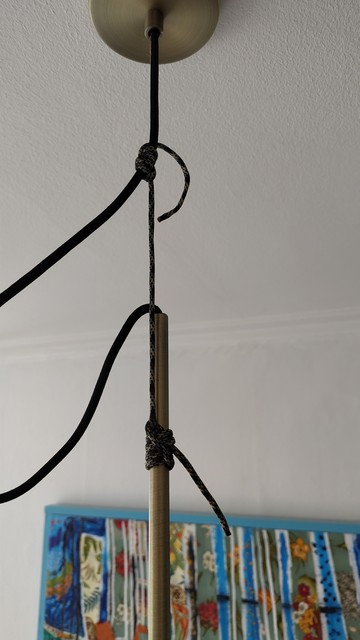Zeitpunkt Nutzer Delta Tröts TNR Titel Version maxTL So 21.07.2024 00:01:07 61.958 +1 3.564.861 57,5 Fosstodon 4.2.10 500 Sa 20.07.2024 00:01:10 61.957 +1 3.561.604 57,5 Fosstodon 4.2.10 500 Fr 19.07.2024 13:57:34 61.956 -1 3.558.474 57,4 Fosstodon 4.2.10 500 Do 18.07.2024 00:00:27 61.957 +1 3.553.476 57,4 Fosstodon 4.2.10 500 Mi 17.07.2024 00:01:10 61.956 -1 3.550.157 57,3 Fosstodon 4.2.10 500 Di 16.07.2024 00:00:36 61.957 +6 3.547.999 57,3 Fosstodon 4.2.10 500 Mo 15.07.2024 00:00:01 61.951 +1 3.544.794 57,2 Fosstodon 4.2.10 500 So 14.07.2024 00:00:00 61.950 +2 3.542.390 57,2 Fosstodon 4.2.10 500 Sa 13.07.2024 00:00:08 61.948 +1 3.539.632 57,1 Fosstodon 4.2.10 500 Fr 12.07.2024 00:01:45 61.947 0 3.537.376 57,1 Fosstodon 4.2.10 500
Richard Darst (@rkdarst) · 11/2022 · Tröts: 228 · Folger: 142
So 21.07.2024 13:50
Is anyone more interested in more #rope and #knot content? For example practical uses, (links to) tutorials, hints, Q&A about use cases.
Pictured: Friend's ceiling lamp was hanging too low and bumping heads. Pocket rope and two friction hitches solves that. See alt text for more.

Ceiling lamp hanging by a cable shortened by parachute cord and two Blake's Hitches - the cord is tied to two points in the hanging cable and then the knots are pushed farther apart, leaving slack in the cable and the lamp hanging by the now-shorter cord. A friction hitch holds on to another rope and allows sliding when you push the knot, but holds when you pull the working end. So, this is adjustable on both ends but if you pull on it, it holds plenty of weight. A friction hitch isn't traditionally tied around a solid object like you see on the bottom (bottom is actually attached to the metal lamp tube, but it's not that unusual. Blake's hitch is quite good but not the easiest to start with. Wikipedia is a good starting point for details on most knots.
[Öffentlich] Antw.: 0 Wtrl.: 0 Fav.: 1 · via Tusky